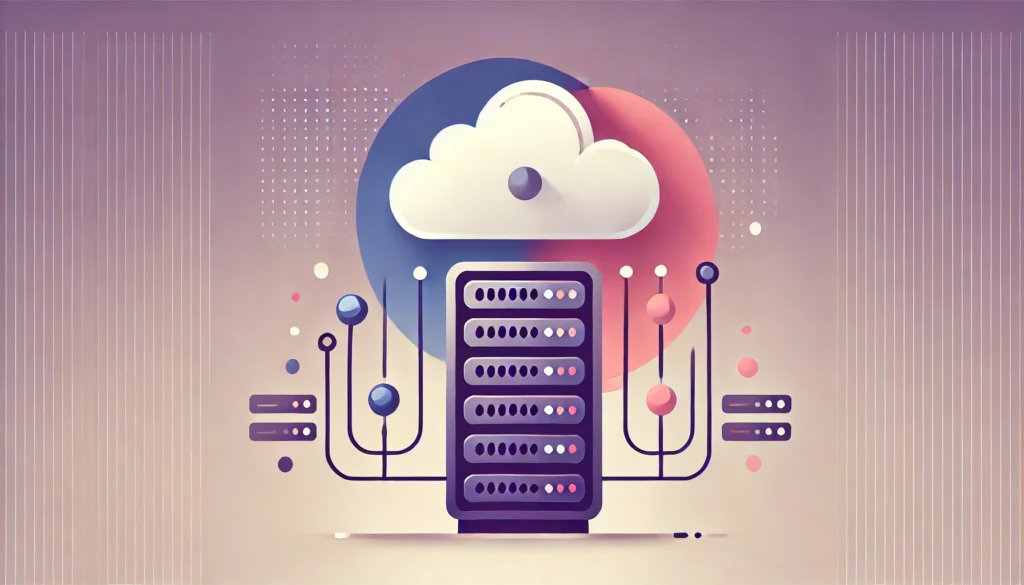Many founders reach a stage where they have found a product market and product-channel fit, and they are ready to fuel their growth and scale their business. But many times, it turns out that another issue is waiting just around the corner, and your tech infrastructure starts causing problems soon after your customer base starts growing. For example, once you gain a few more customers, your servers become overloaded, and your website or platform starts taking too long to respond or even returns time-out errors. As a result, your customer satisfaction rates drop, the number of bad reviews skyrockets, and you start struggling to keep your old clients and attract new ones. But what can you do to prevent this from happening? Below, you will find out what steps you, as a founder, can take to ensure that your company’s tech infrastructure can be easily scaled to handle increased traffic from the early days of building your business.
Basic Technology Infrastructure of Digital Products
The digital products developed and used by different companies can vary significantly depending on the nature of their business, products, and customers. However, one commonality is that most digital products created by companies today are smartphones or web applications. These applications have two distinct parts: frontend and backend. The frontend portion of a website or application is the part the user interacts with, the user interface. At the same time, the backend portion is the part that stores and processes information that’s then shown to the user on the frontend. This means that issues with the backend performance lead to a poor user experience, even if the frontend of the application looks great. Backend problems often start occurring when the number of people using the application or website increases. Fortunately, there are steps you can take to prevent this from happening and ensure that your tech infrastructure scales accordingly as your customer numbers grow.

Don’t Use a Monolithic Technology Architecture
There are two types of technology infrastructure that can be used to create an application or website: monolithic and microservice. In a monolithic infrastructure, all pieces of software exist together in one code base and on one server. So all features of a program, website or platform are interconnected. This type of technology architecture is often used at the beginning stages of a company’s existence. Since the entire infrastructure is built using one code, a company can develop and launch a minimal viable product quickly without spending a ton of money. However, this monolithic infrastructure also has significant downsides. Since all features and services are tightly bound together, it makes it incredibly difficult to develop new features or change the existing code. This leads to several practical problems. For instance, if there’s an issue in one part of the application, the entire website or program will stop working. Similarly, if you need to perform maintenance or make changes to the code, the whole application will be unavailable for users during that time. These and many other disadvantages make a monolithic technology architecture a suboptimal choice.
On the other hand, in a microservices architecture, different features and parts of the system are coded separately and set up to interact through APIs. If one or several parts of the system need to be updated, scaled, or rewritten, other components can continue functioning normally. The same happens when there are bugs in the system. Usually, the issues will be isolated to one feature, allowing your customers to continue using other parts of the website or platform normally. As a result, a microservices architecture is a much better option for companies that want to be able to provide stable and reliable services to their customers and scale quickly.
While many companies start out with a monolithic technology structure, most transition to a microscale system at some point in their existence. The key is to know when the right moment for the transition is and make sure that you don’t wait too long to carry it out, as this process can take a lot of time and cause different parts of your platform to become unavailable to users.
Create Clean, Readable and Scalable Code
One of the most common issues companies encounter when they try to scale their technology infrastructure is overly complicated code. Oftentimes, programmers rush to write code and complete their work without taking the time to come up with good names for values or ensure that their code is as concise and readable as possible. All of this can lead to your company using excessively long code that becomes almost impossible to scale, rewrite, or build new features upon, especially when people who created the code leave your team and new developers join. At the same time, experienced coders and team leaders can plan out their code to ensure its future scalability in advance. You can also use pair programming, code peer reviews, and other similar practices to ensure that your team writes clean and scalable code.
Utilize the Cloud
Many founders prefer to use their own private servers when they first start their company. They often believe that this is easier, cheaper, and ensures a greater degree of security for the data being stored on the server. However, not all of these reasons are true, and it’s generally much better to host your information and services in the cloud from the start. For instance, cloud-based servers are generally more secure than physical servers owned by your company, as they are less vulnerable to system overloads and hacking attacks. Cloud-based storage has many other advantages. For example, it allows for much easier scaling, as you can just add more server capacity to your plan when necessary. Plus, you won’t need to worry about the servers going offline, as cloud storage facilities have a redundancy system that ensures that your information always remains available. Overall, using the cloud allows you to scale your business much easier and faster.
Ensure That Your Team Keeps Rigorous Tech Documentation
Rapidly growing companies often need to constantly keep hiring new employees who have the necessary skills and experience to facilitate the development of new products and enable the company’s growth. As a result, it’s necessary for new team members to be able to quickly become familiar with the code and tech infrastructure they are hired to work on. This is virtually impossible to do without detailed and up-to-date documentation. Without this documentation, you may find yourself in a situation where your entire IT department is dependent on a few people who have been there from the start and know how your code works, how the servers are configured, etc. If these people leave the company, new employees may take months to get up to speed, and most companies can’t afford this.
To avoid this, your team needs to keep detailed documentation explaining your company’s tech infrastructure, code, and server configurations and provide detailed information on the strategy and reasoning behind key decisions. This will ensure an easy and quick onboarding process for new employees.
Don’t Accumulate Technical Debt
Today, most companies use agile software development methodologies to speed up product development and deliver results more efficiently. While in the waterfall development process, features are developed to perfection before they are released, agile teams first develop an imperfect but viable version of each feature or system and then improve on them during each iteration. This is important to ensure that you don’t spend a lot of resources developing something your customers ultimately don’t like or need. However, this approach can cause you to accumulate technical debt as teams are pushed to develop new features and products while features that have already been released remain imperfect. If you want to ensure that your company stays viable, your teams need to take time to go back and complete work on features that have already been developed. If you don’t keep up with the tech debt, it can ultimately become too great and cause the downfall of the entire company.
Key Conclusions
- Building a scalable technology infrastructure must be one of the top priorities in your company from day one if you want to create a viable and profitable business.
- Your team needs to avoid focusing on the development of new features and programs while sacrificing quality and long-term success. Instead, every member of your team needs to keep scalability in mind during each step of the process.
- If you want to build a viable IT infrastructure, it’s crucial to use a microservices-based environment, write clean and concise code, utilize the cloud, keep rigorous documentation regarding all aspects of your tech infrastructure, and avoid accumulating technical debt.
